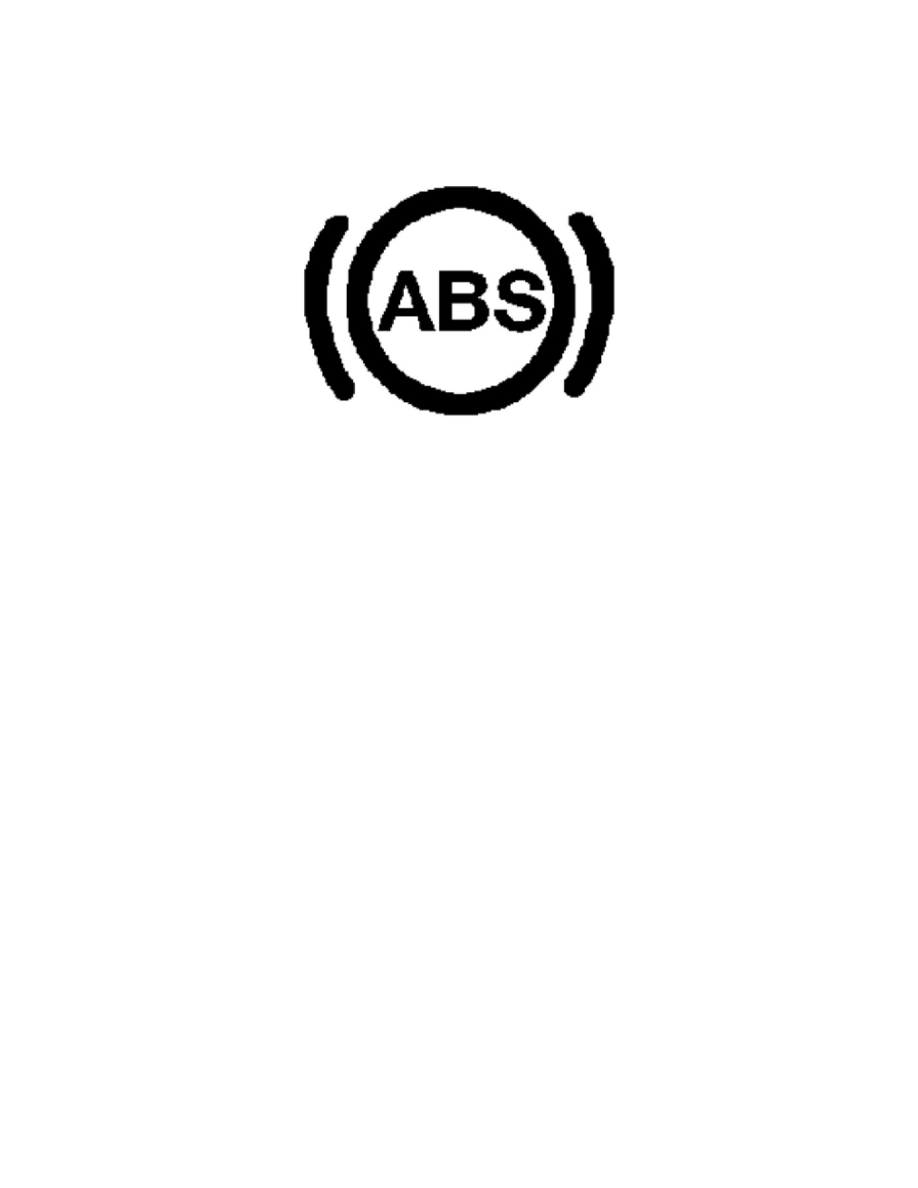Grand Caravan V6-4.0L (2008)

ABS Light: Description and Operation
ABS Indicator
Description
DESCRIPTION
An Antilock Brake System (ABS) indicator is standard equipment on all instrument clusters. On Dodge vehicles, this indicator is located near the bottom
of the speedometer dial face of the cluster overlay, near the center. On Chrysler vehicles, this indicator is located near the top of the cluster overlay,
between the speedometer and the tachometer.
The ABS indicator consists of a stencil-like cutout of the International Control and Display Symbol icon for Failure of Anti-lock Braking System in
the opaque layer of the instrument cluster overlay. The dark outer layer of the overlay prevents the indicator from being clearly visible when it is not
illuminated. An amber Light Emitting Diode (LED) behind the cutout in the opaque layer of the overlay causes the indicator to appear in amber through
the translucent outer layer of the overlay when it is illuminated from behind by the LED, which is soldered onto the instrument cluster electronic circuit
board.
The ABS indicator is serviced as a unit with the instrument cluster.
Operation
OPERATION
The ABS indicator gives an indication to the vehicle operator when the ABS system, or a circuit or component of the system is ineffective. This indicator
is controlled by a transistor on the instrument cluster circuit board based upon cluster programming and electronic messages received by the cluster from
the Controller Antilock Brake (CAB) over the Controller Area Network (CAN) data bus.
The ABS indicator Light Emitting Diode (LED) is completely controlled by the instrument cluster logic circuit, and that logic will only allow this
indicator to operate when the instrument cluster receives a battery current input on the fused ignition switch output (run-start) circuit. Therefore, the LED
will always be OFF when the ignition switch is in any position except ON or START. The LED only illuminates when it is provided a path to ground by
the instrument cluster transistor. The instrument cluster will turn ON the ABS indicator for the following reasons:
-
Bulb Test - Each time the ignition switch is turned to the ON position the ABS indicator is illuminated for about three seconds as a bulb test. The
entire bulb test is a function of the CAB.
-
ABS Indicator Lamp-On Message - Each time the cluster receives an electronic ABS indicator lamp-ON message from the CAB, the ABS
indicator will be illuminated. The indicator remains illuminated until the cluster receives a lamp-OFF message from the CAB, or until the ignition
switch is turned to the OFF position, whichever occurs first.
-
Communication Error - If the cluster receives no lamp-ON or lamp-OFF messages from the CAB for five consecutive message cycles, the ABS
indicator is illuminated. The indicator remains illuminated until the cluster receives a valid message from the CAB, or until the ignition switch is
turned to the OFF position, whichever occurs first.
-
Actuator Test - Each time the instrument cluster is put through the actuator test and the Totally Integrated Power Module (TIPM) is configured
for the ABS option, the ABS indicator will be turned ON, then OFF again during the bulb check portion of the test to confirm the functionality of
the LED and the cluster control circuitry.
-
ABS Diagnostic Test - The ABS indicator is blinked ON and OFF by lamp-ON and lamp-OFF messages from the CAB during the performance
of the ABS diagnostic tests.
The CAB continually monitors the ABS circuits and sensors to decide whether the system is in good operating condition. The CAB then sends the proper
lamp-ON or lamp-OFF message to the ElectroMechanical Instrument Cluster (EMIC) (also known as the Cab Compartment Node/CCN). If the CAB
